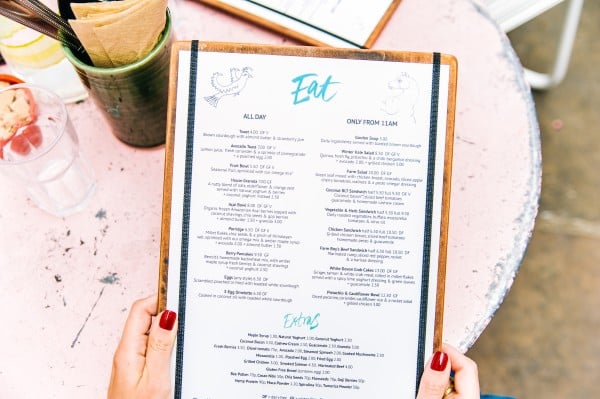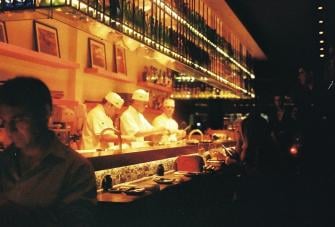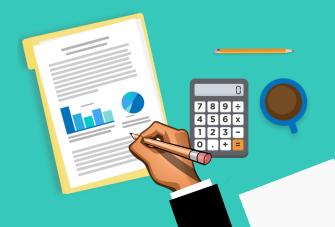Everything You Need to Know About Restaurant Profit Margins
Restaurant profit margins can determine if a business is a hit or a failure. But despite the importance of this metric, many entrepreneurs do not fully understand how to calculate their margins, nor how to improve them.
If you want to succeed in the fast-paced hospitality industry, it’s important to do everything you can to increase your restaurant profit margin and keep guests happy.
What is profit margin?
Profit margins are measured in percentages and show how much profit a business makes. Restaurant owners need to understand these numbers to ensure their menu is priced correctly.
Gross Profit vs Net Profit
Gross Profit = Gross revenue (all money you take in) - the cost of goods sold
This number shows you if your menu items are priced high enough to cover the cost of the food and drinks, but it does not account for other expenses.
Net Profit = Gross revenue - the cost of goods sold - all other expenses
Calculating net profit will show you how much money your business actually earned over a period. It accounts for bills, advertising, salaries, and anything else you might pay for to run your business.
You will need to know your net profit to calculate your restaurant’s profit margin.
Profit margin = net profit / gross revenue
For example, your diner might take in £200,000 gross revenue and £50,000 profit after all expenses.
£50,000 / £200,000 = .25
Your restaurant’s profit margin will be 25% in this scenario.
What is the average profit margin by each type of restaurant?
Some industries, like clothing and jewellery, can operate on high-profit margins. Diamonds may not cost that much to remove from the earth, but they are sold at incredibly high prices.
The restaurant industry does not have the luxury of running on high-profit margins like this. A sandwich is a sandwich, after all, so diners will not be happy to spend extravagantly on their afternoon lunch.
Let’s look at some averages across different types of restaurants:
- Catering and Events: 7 - 8 %
- Food Trucks: 6 - 9%
- Fast food and takeout: 6 - 9%
- Full service: 3 - 5%
Why are they so low?
As we mentioned earlier, the restaurant industry is cut-throat. Pricing is competitive, and diners can easily go to a competitor if they think your prices are too high. If this is the case, why don’t restaurants all charge more for their meals?
In short, restaurants have a lot of expenses. No matter how expensive a meal is, a significant portion of the revenue will go to these overhead costs.
Aside from the cost of goods, here are some typical expenses for restaurants:
- Rent
- Salaries and labour costs
- Utilities
- Maintenance and Repairs
- Marketing
- Software
- Licensing
- Administrative Affairs
Ways to boost your restaurant profit margin
Spruce up your menu
Regardless of what type of restaurant you have, it helps to have a simple menu. We don’t mean that it must be short, but it should be easily understandable, and should help diners find the best choices.

With a poor menu, you may actually be discouraging guests from buying certain items. Just look at all the research and technology used to create menus for some of the largest brands. With many companies relying on tools like eye-tracking hardware, it is evident that where an item sits on the menu can affect the psychology of diners.
Ideas to revamp your menu and increase your sales include:
- Change up the design: Even if you don’t have the resources to conduct a full evaluation of your menu, you can redesign the layout to highlight items you want to stand out
- Trim the fat: If your menu is extensive, you can remove duplicate items or combine them and include a list of varieties, such as a burger with options for bacon, egg, and other add-ons
- Get digital: Put your menu on a tablet or other device to show off big-ticket meals and fun drinks. A digital experience like this is much more appealing than traditional black and white paper, and it can open the door to online ordering
While there will be costs associated with fixing up your menu, the downstream effects will be well worth it.
Increase table turnover
While it is certainly nice for diners to enjoy their time at your restaurant, you don’t want them to spend too much time at the table. The slower your customers finish their meals, the fewer guests you can serve. The fewer guests you serve, the less revenue you can collect.
It is crucial that you increase table turnover to boost your revenue.
Here are some ways to speed up your service:
- Implement tableside ordering: The faster orders are sent to the kitchen, the faster they reach the table. Allowing your servers to take orders at the table quickly will increase efficiency tremendously
- Install a Kitchen Display Screen: Paper order slips are messy and outdated. Simplify the back of house process with a digital display that can track new orders
- Leverage table management software: Assigning too many tables to one server will cause chaos. With the right software, you can evenly distribute guests to tables and improve quality of service
Redesign your Floor Plan
Your restaurant may have a chic vibe that draws people in, but your design may be cutting into your profit margins.
Are you making the most of your space? Would it be possible to add more seats?
Deciding on an appropriate number of tables is a fine balance. Too many, and your guests will feel cramped and uncomfortable. Too few, and you will make considerably less in sales, possibly requiring a hike in prices.

How many seats should you have?
There is no concrete answer, but the industry standard is 60% of your restaurant’s space should be dining, while 40% is the kitchen, preparation, and storage areas.
Moreover, you want to provide ample room for your guests. Most restaurants calculate this number by measuring the amount of square footage per guest.
Here are recommendations by Total Food Service:
- Fine Dining: 18-20 square feet
- Full-Service Restaurant: 12-15 square feet
- Counter Service: 18-20 square feet
- Fast Food and Quick Service Restaurants: 11-14 square feet
If chairs are facing back to back, ensure there’s at least 18 inches of space between them. This distance will allow traffic to pass through while still maximizing your available space.
Take Control of Your Inventory to Reduce Food Waste
Restaurants waste a ton of food. In the US, establishments contribute 22 to 33 billion pounds of food waste each year. Even more staggering, up to 10% of this waste occurs before the food even hits the table!
A handful of factors contribute to this large amount of waste, but here are the leading issues:
- Large portion sizes: The average restaurant meal delivers over 50% of recommended daily calories for one person. With such massive plates, there’s bound to be unnecessary food costs due to unfinished meals, and diners leave 55% of leftovers at restaurants on average
- Extensive menus: Offering choice can be beneficial, but it means storing a massive inventory of diverse items. Restaurants with large menus often toss out huge quantities of expired food, which can add up to a ton of wasted spending
- Staff behaviour: Kitchen’s are busy, and the staff wants to turn out high-quality meals quickly. This culture can lead to poor storage practices that hasten spoilage, as well as food waste due to over-preparation
- Poor oversight: It’s easy to misplace a box in a freezer or stockroom, especially without digital inventory management. Many restaurants waste food and ingredients by allowing newer shipments to hide the existing goods, causing them to go unnoticed and eventually expire
While your restaurant is bound to have some food waste, you can minimize it with the right approach.
Firstly, reducing portion sizes and shortening your menus is a must if you are noticing frequent food waste.
Secondly, you should use modern restaurant management software to record all new inventory and update records when each meal is sold. Your system can help prevent you from ordering items you already have in stock and prompt you when certain items are due to expire.
Watch Your Utility Bills
Like all businesses, your restaurant needs to keep the lights on. Utilities are necessary, but you can take steps to reduce how much you spend each month, boosting your average restaurant profit margin.
Consider the following:
- Look over your lighting: For many places, increasing natural light helps add to the ambience and reduces energy costs. You can also use up to 80% less energy if you replace your current lighting with halogen bulbs, compact fluorescent lamps, and light-emitting diodes
- Review your best practices: Educate your employees on the importance of conservation. Make sure all kitchen staff know to close refrigerator and freezer doors, and review how to wash dishes without wasting water
- Invest in new appliances: Heating and cooling systems, water heaters, and freezers can drain massive amounts of energy. Make sure you periodically update your appliances to maintain a low energy bill
Improve training and retention
The 2019 restaurant turnover rate hit a record-breaking 75%, indicating that you could lose most of your employees within 12 months of hire. Hiring and training new staff takes time and money, so reducing this phenomenon can boost your profitability.
Take these steps to increase retention and simplify training:
- Establish Standard Operation Procedure: Your restaurant likely has best practices, but is it codified in a uniform manual? By standardizing how everything is done, you can speed up training and reduce costs associated with it. Using a powerful point of sale system is one of the best ways to shore up your SOP
- Reward good employees: Most people work to earn a living, so money is their chief motivator. It is smart to offer promotions and bonuses for good work. If an employee asks for a raise, it is often in your best interest to increase their wage somewhat because it often costs more to hire and train a new employee
- Be flexible: Allow your employees to swap shifts or take a few days off as needed. Modern restaurant management software helps visualize work schedules, so you can quickly identify where you need coverage if an employee requests time off
Take Control of Your Finances with Epos Now
Your POS can play a crucial role in ensuring high restaurant profit margins. Epos Now not only allows you to collect payments and process orders, but it also tracks inventory, integrates with accounting software, and can help manage your seating chart. You can even collect reviews after a meal to boost your social media presence.
Contact us today to get started.




